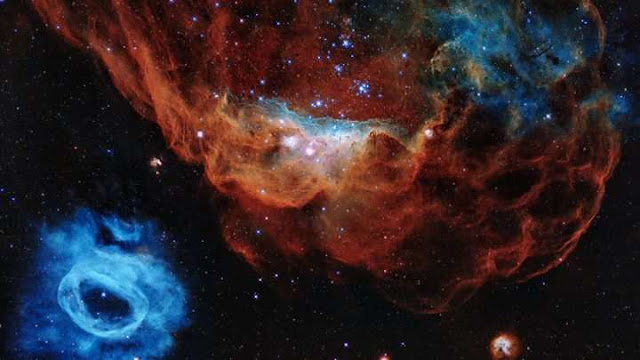 |
Where is the Hubble Telescope.
The Hubble Space Telescope was in the front row and filmed a rare celestial event. The comet approached the Sun and began to disintegrate. The images from the observatory were shared on the Internet.
Comet C / 2019 Y4 (ATLAS) was first discovered on December 29, 2019. It was detected by the robotic Asteroid Terrestrial-Impact Impact Last Alert System (ATLAS). Asteroid Terrestrial Impact System. Over the next few months, the celestial body became brighter. It was heading towards the inner solar system. Astronomers expected it to be so bright in May that man could see it with his naked eye from Earth in the night sky.
Hubble Telescope Discoveries.
But at the beginning of this month, the object began to gradually disappear. One amateur astronomer noticed it disintegrate into several pieces. So the astronomical community lost an unusual light show in May. But the fragmented comet was seen by Hubble, who took some impressive pictures.
Hubble identified 30 fragments of the comet on 20 April, followed by 25 fragments on 23 April. The smallest fragment of a comet could be roughly the size of a house.
Hubble Telescope facts.
At the time of its collapse, the space object was about 146 million kilometres from Earth. Experts at NASA reported that such large-scale events occur only once or several times a decade, as most comets are too faint to be seen.
Comets are some of the most legendary and fascinating creatures in outer space. Their sudden appearance is highly unpredictable, and their journeys across the sky are so fleeting that they were once feared and considered the hallmarks of impending evil, epidemics, and wars.
Hubble Telescope Cost.
The comet’s hard core, which is the source of their long tails, is a fragile cluster of ice, rocks and dust. However, astronomers do not know why some comets fall apart like fireworks.
Many researchers involved in the study of ATLAS comet splitting say that this case is evidence that the fragmentation of these small space bodies is likely to be common. Researchers point out that decay may even be the most common method in which hard nuclei of comets die.
Hubble Telescope live image.
Although the cause of the ATLAS comet’s decay has not yet been confirmed, some astronomical journals (such as Sky & Telescope) have stated that the acceleration of rotation is a likely catalyst for comet nuclear decay in general. Their accelerated rotation is probably the result of gas jets exploding on the surface of the comet’s nucleus. The gas is catalyzed by solar heating as it approaches perihelion (the point at which the space body is closest to the Sun).
Recently, the Hubble Telescope celebrated another anniversary of our planet’s orbit. Launched into space for 30 years on the Discovery Space Shuttle, he has already created a niche for himself in the hearts and minds of all lovers of science, space and new discoveries. Here are some other incredible photographs of space objects that Hubble managed to capture.
Tags
Science
